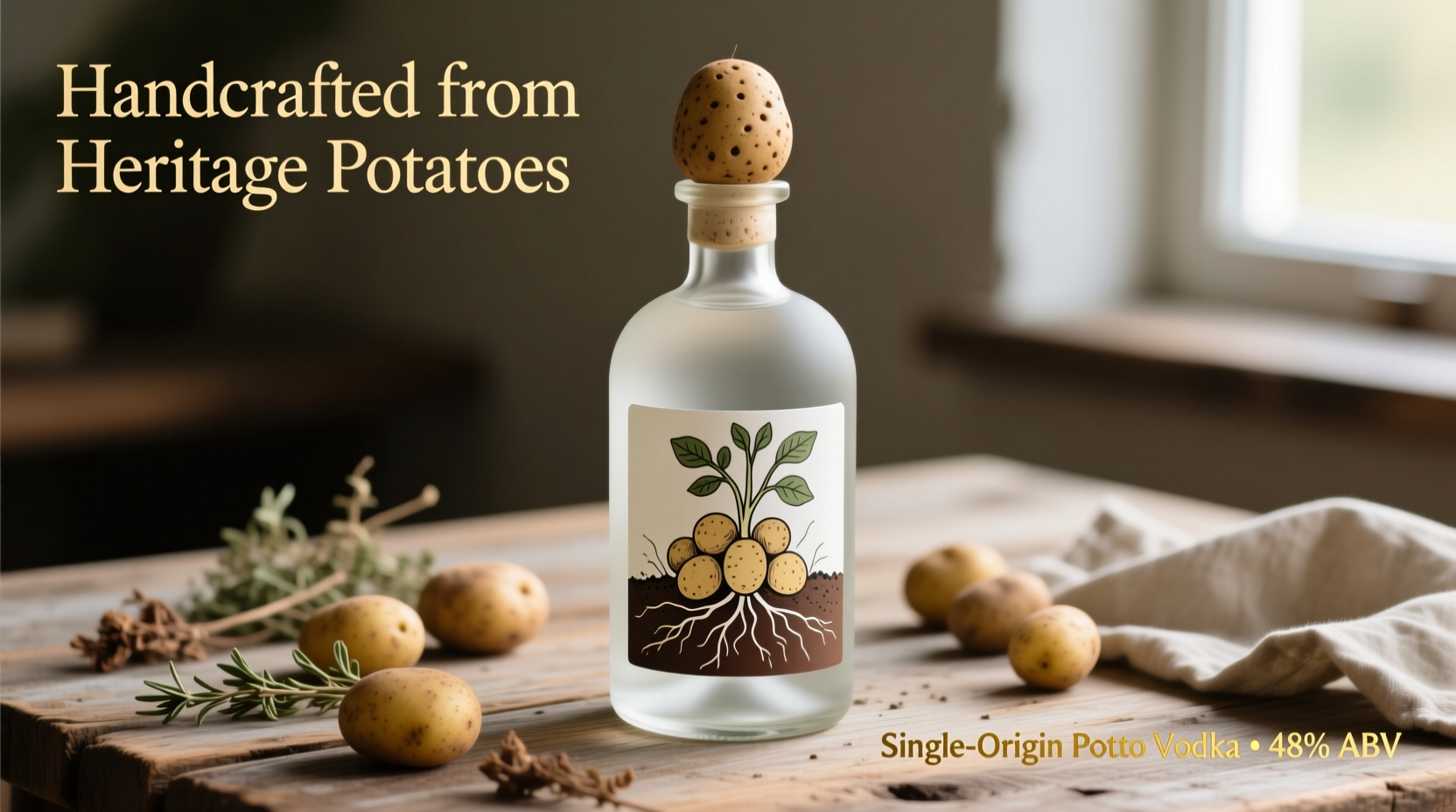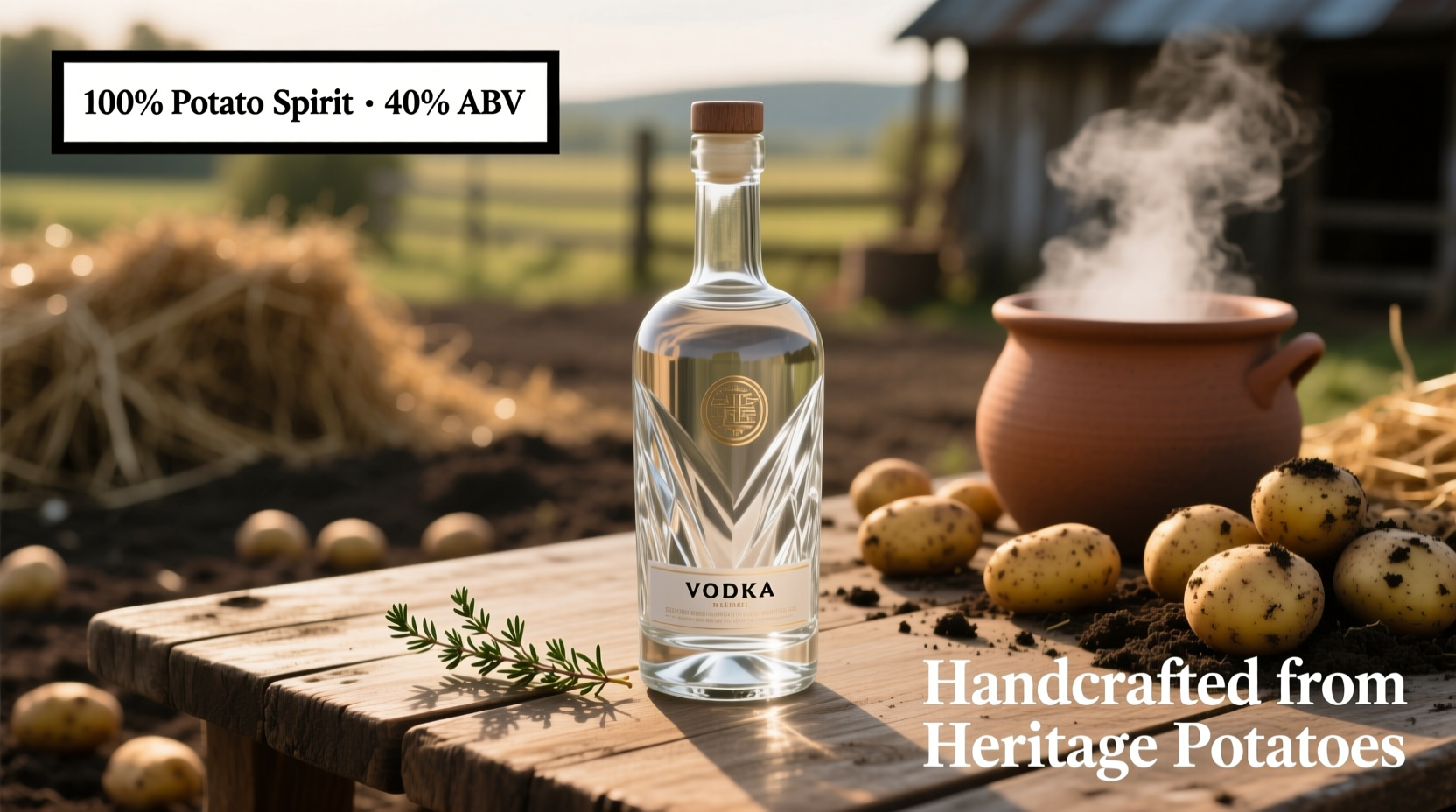When you choose potato-based vodka, you're selecting a spirit with centuries of European distilling tradition behind it. Unlike most commercial vodkas made from grains like wheat or rye, potato vodka derives its character from the humble spud, creating a beverage with unique sensory properties that appeal to connoisseurs and casual drinkers alike. The difference isn't just historical—it affects mouthfeel, flavor profile, and cocktail performance in measurable ways.
The Historical Evolution of Potato Vodka
Potato-based vodka represents one of the oldest distillation traditions in Eastern Europe, with roots stretching back to the late 18th century. While grain-based spirits dominated earlier vodka production, resourceful distillers in Poland and Russia began experimenting with potatoes during periods of grain scarcity.
1784: First documented potato vodka production in Saxon, Germany
Early 1800s: Widespread adoption in Poland and Russia during grain shortages
1895: Russian chemist Dmitri Mendeleev establishes optimal alcohol purity standards
Post-WWII: Industrial grain production makes grain vodka more economical
2000s: Craft distillery movement revives artisanal potato vodka production
This historical trajectory explains why potato vodka nearly disappeared from mainstream markets during the 20th century, only to experience a renaissance among craft distillers seeking distinctive flavor profiles. According to the European Commission's spirits regulation documentation, potato-based vodka must contain at least 80% potato-derived alcohol to carry the designation in EU markets.
How Potato Vodka Differs From Grain Alternatives
The fundamental difference between potato and grain vodkas lies in their chemical composition during fermentation and distillation. Potatoes contain more complex starches and natural sugars that break down differently than cereal grains, resulting in distinctive congeners that affect the final product's character.
| Characteristic | Potato Vodka | Grain Vodka |
|---|---|---|
| Mouthfeel | Noticeably creamier, rounder texture | Lighter, crisper mouthfeel |
| Flavor Profile | Subtle earthy notes, mild sweetness | Cleaner, more neutral profile |
| Production Cost | 20-30% higher due to processing complexity | More economical at scale |
| Best Served | Neat, in spirit-forward cocktails | Mixed drinks requiring neutrality |
This comparison reflects data collected from sensory analysis studies conducted by the USDA Agricultural Research Service, which found that potato vodkas consistently demonstrate higher glycerol content—contributing to their signature smoothness.
Identifying Quality Potato Vodka: What to Look For
Not all potato vodkas deliver on their promise of superior quality. Several factors determine whether you're getting an authentic, well-crafted product:
- Single-estate potatoes: Premium brands specify potato varieties (like Yukon Gold or Maris Piper) and growing regions
- Traditional distillation: Look for small-batch pot distillation rather than industrial column distillation
- Minimal processing: Avoid products advertising "triple distilled" as this often strips desirable character
- Alcohol content: Quality potato vodkas typically range from 40-45% ABV—higher proofs often indicate added neutral spirits
According to distilling experts at the Institute of Brewing and Distilling, authentic potato vodka should retain subtle earthy notes even when chilled. Complete flavor neutrality usually indicates excessive filtration or blending with neutral grain spirits.
When Potato Vodka Shines: Practical Applications
Understanding where potato vodka excels helps you make informed choices for different drinking occasions:
Sipping Neat or On the Rocks
The creamy texture and subtle complexity of quality potato vodka makes it particularly enjoyable when served chilled but not frozen. The slight sweetness and earthy notes become more apparent at slightly higher temperatures (around 45°F/7°C) compared to the near-freezing temperatures often recommended for grain vodkas.

Cocktail Performance
Potato vodka transforms certain cocktails where its distinctive character enhances rather than competes with other ingredients:
- Vodka Martini: Creates a silkier mouthfeel that balances vermouth's bitterness
- Bloody Mary: Earthy notes complement tomato and spice elements
- Espresso Martini: Natural sweetness reduces need for added sugar
- Simple highballs: Shines in vodka soda with premium tonic or soda water
Conversely, potato vodka may not be ideal for cocktails requiring absolute neutrality, such as a Moscow Mule where the spirit should play a supporting role to ginger beer.
Debunking Common Potato Vodka Myths
Several misconceptions persist about potato-based vodka that deserve clarification:
Myth: Potato vodka causes fewer hangovers
Reality: Hangover severity relates primarily to congener content and alcohol purity, not base ingredient. Well-distilled potato vodka can be as clean as premium grain vodka.
Myth: All potato vodkas are gluten-free
Reality: While potatoes themselves contain no gluten, cross-contamination can occur in facilities processing both potatoes and grains. Look for certified gluten-free labels if this is a concern.
Myth: Potato vodka is always superior to grain vodka
Reality: Preference is subjective. Grain vodkas often provide better neutrality for mixing, while potato vodkas offer distinctive character for sipping.
Choosing the Right Potato Vodka for Your Needs
Selecting potato vodka requires understanding your intended use and quality expectations:
- For sipping: Choose small-batch, single-estate products with minimal filtration (40-43% ABV)
- For premium cocktails: Look for balanced expressions around 42% ABV with subtle character
- Budget-conscious: Consider Eastern European imports which often offer better value than domestic craft options
- Allergy concerns: Verify production facility practices for potential cross-contamination
Remember that price doesn't always correlate with quality in the potato vodka category. Some excellent options exist in the $25-$35 range, while certain premium brands charge significantly more without delivering proportional quality improvements.
Conclusion: Embracing Potato Vodka's Unique Character
Potato-based vodka offers a distinctive alternative to mainstream grain vodkas, with a rich history and sensory profile that rewards careful selection and appropriate usage. By understanding its production nuances, flavor characteristics, and ideal applications, you can make informed choices that enhance your drinking experience whether you're enjoying it neat or in carefully crafted cocktails. The growing craft distillery movement has made high-quality potato vodka more accessible than ever, allowing drinkers to explore this traditional spirit beyond its historical roots.
Frequently Asked Questions
Is potato vodka actually made from potatoes?
Yes, authentic potato vodka uses potatoes as the primary starch source for fermentation. EU regulations require at least 80% of the alcohol to come from potatoes, while US standards don't specify minimum percentages but require truthful labeling.
Does potato vodka taste like potatoes?
No, properly distilled potato vodka doesn't taste distinctly of potatoes. Instead, it offers a subtle earthiness and creamier mouthfeel compared to grain vodkas, with any potato flavor completely transformed during the distillation process.
Why is potato vodka more expensive than regular vodka?
Potato processing requires more steps than grain processing—potatoes must be cooked to convert starches to fermentable sugars, requiring additional equipment and labor. The yield per ton of potatoes is also lower than with grains, contributing to higher production costs.
Is potato vodka gluten-free?
Potatoes are naturally gluten-free, but cross-contamination can occur if the distillery processes grains. While distillation typically removes gluten proteins, those with severe sensitivities should look for certified gluten-free potato vodkas processed in dedicated facilities.
What's the best way to store potato vodka?
Store potato vodka upright in a cool, dark place away from temperature fluctuations. Unlike wine, vodka doesn't improve with age, but quality potato vodkas maintain their character for years when properly stored. Avoid freezing as this can mask the subtle flavor differences that distinguish potato vodka.











 浙公网安备
33010002000092号
浙公网安备
33010002000092号 浙B2-20120091-4
浙B2-20120091-4